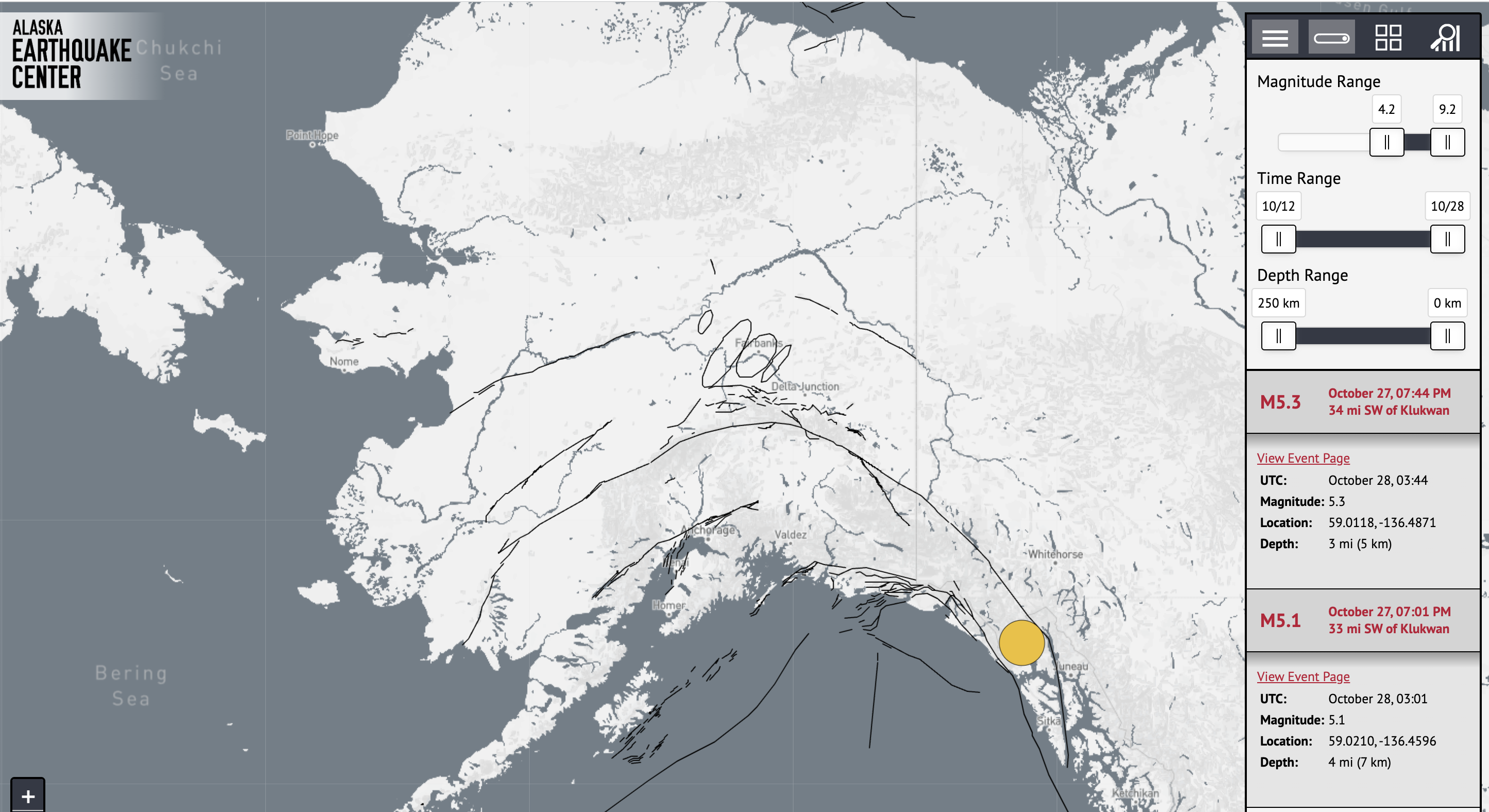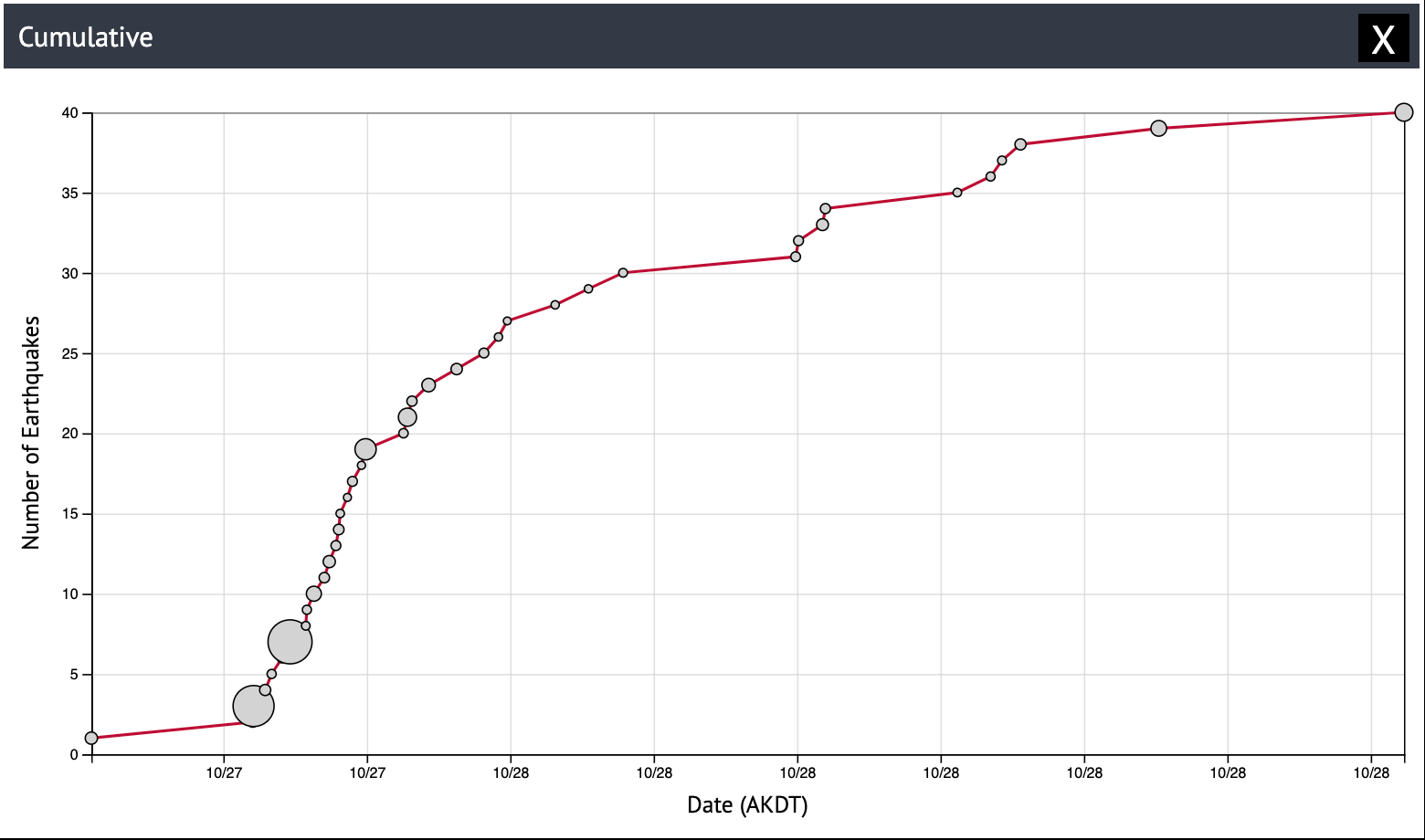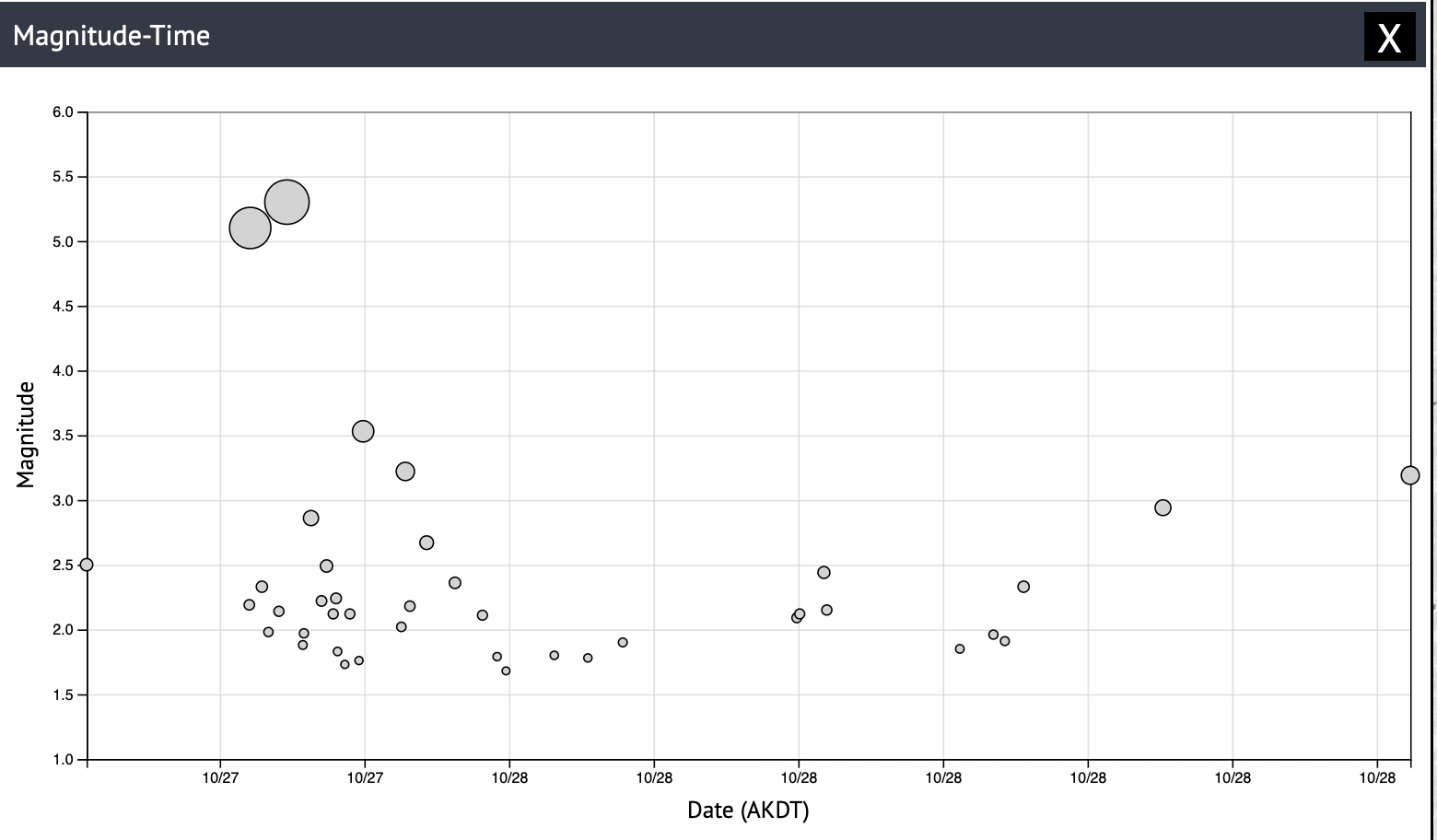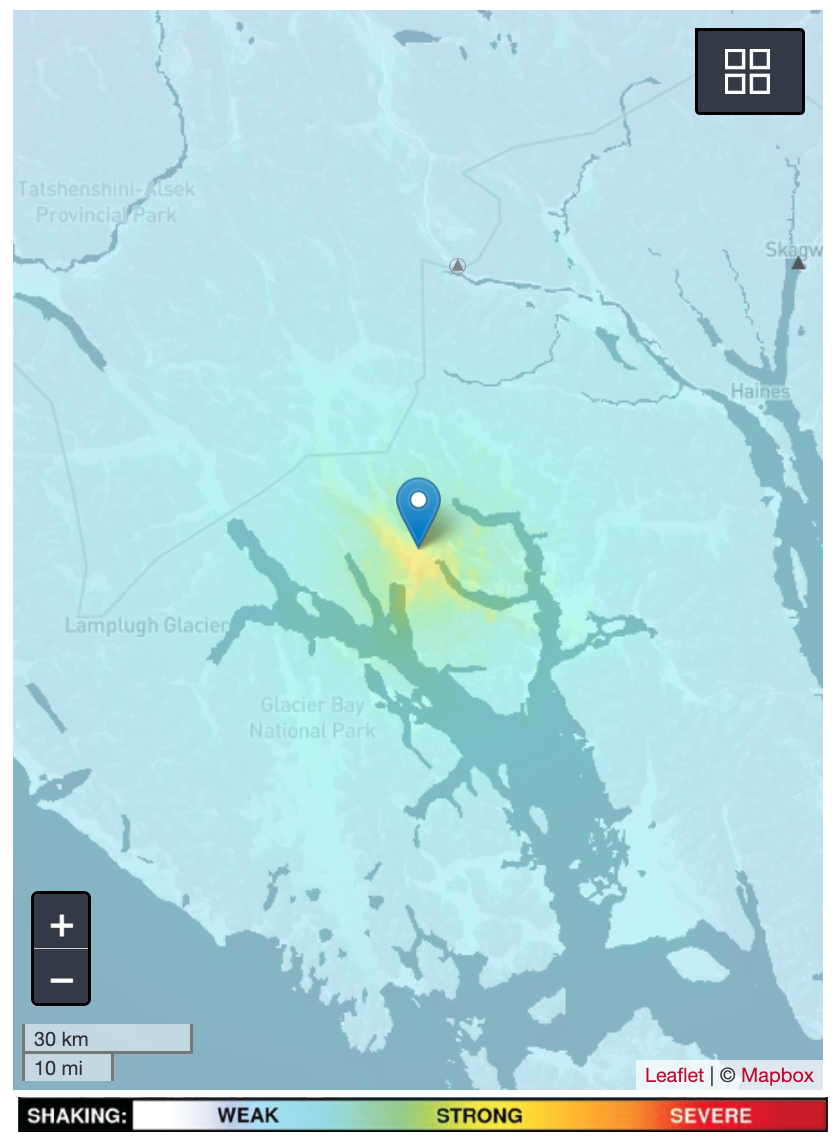



Two moderate-sized earthquakes—magnitudes 5.1 and 5.3—occurred near Glacier Bay in Southeast Alaska within a 45-minute period on the evening of October 27, 2023 (Figure 1). They were followed by about 40 aftershocks within the first 24 hours (Figures 2 and 3). The mainshocks and larger aftershocks were felt in Southeast Alaska communities and in northern British Columbia, Canada, (Figure 4) in part because of their size but also because these were shallow events, at 3–4 miles (5–7 km) deep . While the number of felt events in short succession may feel out of the ordinary for local residents, the size and location of these events are not unusual for the region.
The piece of North American crust where these earthquakes happened is wedged between two major regional strike-slip faults: the Denali Fault to the northeast and the Fairweather Fault to the southwest (see Figure 1). Both of these faults can be sources of much larger earthquakes, such as the M7.8 event in 1958 that ruptured the entire length of the Fairweather Fault from the head of Yakutat Bay. This earthquake caused a massive landslide that crashed into Lituya Bay, creating a tsunami wave 1,720 feet high. Because of the way the bounding faults move, the sliver between them is under compression. This pressure buildup is regularly released by moderate-sized earthquakes similar to the ones that just occurred.
Three other earthquakes of similar magnitude and type within a 20-mile radius of the October 27 events have happened within the past 10 years. The largest in the past half century were M6.2 and M6.3, on May 1, 2017, about 60 miles north of the recent events. While the 2017 earthquakes were about 30 times larger than the M5.1 and M5.3 from last night, there are some similarities between the two sequences. Both M6+ events occurred within 1 hour of each other.
The U.S. Geological Survey calculates the probability of aftershocks after significant earthquakes. In this region, aftershocks of less than magnitude 3 are virtually guaranteed, but the probability of an aftershock above magnitude 5 in the coming year is less than 5 percent. The Alaska Earthquake Center will continue to monitor earthquake activity as it unfolds. Be sure to check our interactive earthquake map and tools to learn more about the setting and continued events.



